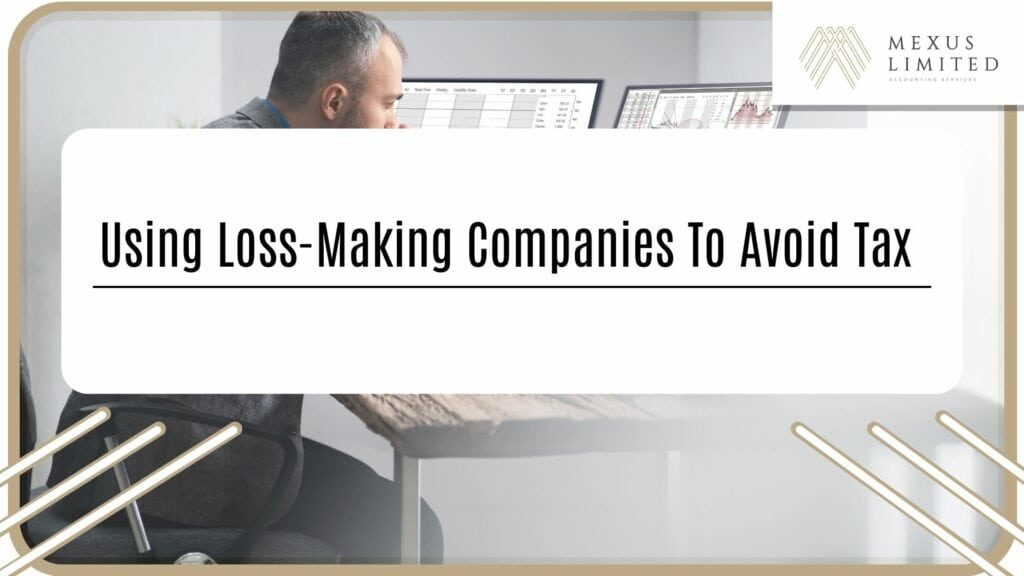Using loss-making companies to avoid tax

A loss sustained by a sole proprietor or partner in a partnership in a taxable year may be carried forward and applied against profits in subsequent years or, if the proprietor or partner carries on more than one business, losses in one line of business may be offset against profits in another line of business. A proprietor or partner may also elect to be taxed on his or her personal income and, if beneficial, to have the losses sustained deducted from his or her personal income. If a proprietor or partner elects to be assessed jointly with his spouse for personal income tax purposes and his business losses are greater than his assessable income, the excess business losses are transferred to and deducted from the spouse’s assessable income and if there is still an amount of unsettled losses left, that amount can be carried forward and used to offset the amount of the couple’s income for future years of assessment.
Losses of a limited company for one tax year may also be carried forward and used to offset profits in subsequent years, but if the limited company continues to suffer losses each year, it may be considered for closure, with the result that losses accumulated over the years will not have the opportunity to offset profits in subsequent years. Some taxpayers may choose to purchase a shareholding in these loss-making companies, change their names and then commence operations, with the profits earned being offset by the losses carried forward, a tax avoidance method that allows the renamed company to reduce its profits tax bill. However, this arrangement has been restricted by section 61B of the Inland Revenue Ordinance in the latter part of the year, which will eventually deny the company to offset its profits against its prior losses.
If section 61B is implemented, the IRD will consider the following:
Whether there is a change in shareholding
A change in shareholding is considered a change in shareholding regardless of whether the shareholding is transferred to a current shareholder or a shareholder who was not previously a shareholder of the company.
Whether the change in profits before or after the change in shares results in the collection of profits
The IRD will ascertain whether the nature of the company’s business, management and control, the background of the transferee of the shares, and the pattern of income/expenses have resulted in the collection of profits.
Sole or main purpose
The sole or primary purpose of a share change is to obtain a tax benefit by using losses to offset profits.
The above information is for reference only. If you have any questions, we welcome your tax inquiries.
